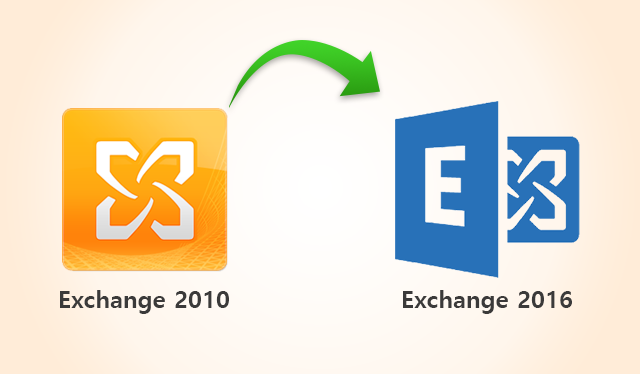Exchange 2010 to 2016 Migration Checklist: All Requirements Discussed


The post will be providing a guideline to an individual to upgrade Exchange Server 2010 to 2016. This will help in completely focusing on the Exchange 2010 to 2016 migration checklist. All the important guidelines required to move mailboxes from older platform to the newer one are mentioned here.
It is quite difficult and time-consuming task to exhibit Exchange to Exchange migration. The major challenges arise when the administrator upgrades the current Exchange server version such as Exchange 2010 to 2016/2013. The same tasks become more challenging when the primary and targeted servers are kept in a different forest. Therefore, it is highly recommended to the administrators that they should give their quality time to plan, prepare, and deploy the activity. Patiently read the entire checklist provided in the following segment.
Exchange 2010 to 2016 Migration Plan in Three Major Phases
The following points are the major phases that occurs while upgrading the Exchange Server:
- Planning: This phase includes the strategic area for the successful deployment of projects.
- Deployment: In this cycle, there will be the establishment of coexistence between the source and destination Exchange servers.
- Migration: Shifting the mail flow, public folders, mailboxes, etc., from Exchange Server 2010 to 2016/2013.
Exchange 2010 to 2016 Migration Checklist
When organizations decide to upgrade their Exchange Server then, a checklist needs to be followed for successful and hassle-free migration.
- Project Assessment: It is quite obvious that without having any idea of migration it is impossible to exhibit things. You will not be able to gather all the required resources and determine estimated evaluation time of the process. Therefore, this is the time when you have to attempt project assessment for blueprinting each and everything of the project. Following are those factors that need to be determined:
- All the requirements related to the business of recovery, migration needs, etc.
- Overall data amount that you want to keep in the hold state
- Counting of all the Exchange mailboxes and folders to be moved
- Mention the data type involved in data shifting like emails, contacts, etc.
- Target the week or month up to which entire migration has to be completed
- Check All the Requirements of System: When you get familiarized with all the do’s and dont’s of the project, now its time to verify all the requirements of the system. Collect all the technical details associated with requirements of hardware and software, operating system, and the network speed need for project execution. Do not forget to check all the coexistence based scenarios.
- Cleaning of the Entire Active Directory: This is the next point to be checked in the Exchange 2010 to 2016 migration requirements. It involves cleaning of Active directory and hence, elimination of all the references to Exchange domains and other objects of the directory, which are no more authenticated. If these objects are left behind then, they will collide later and become a reason for failure in the migration. So it is better to erase all these objects from a directory with ADSIEdit but, ensure that you have taken its backup.
- Archiving of the MS Exchange Data: It is important to archive data before upgrading from Exchange 2010 to 2016/2013. Not only the unnecessary data migration will be avoided by this, but also there will be a reduction in the server bloat. For example, if you are having 2TB of data on the messaging system then, without archiving this it will get bloated up to 3 to 4TB size. It happens because of SIS factor, which causes data replication technique in the newer version. So, simply get rid of this problem by data archiving and hence, also keep your data safe from the risk of corruption.
- Exchange Database Good Health: In order to avoid even a small risk while moving from Exchange 2010 to 2016, you should check that the Exchange database is in good health state. Transferring public folders and mailboxes of Exchange is already a risky task and of course, no one wants to invite trouble to come to them. So it is mandatory to preserve the healthy state of the database and hence, take the regular backup for avoiding any kind of disruptions.
- Plan for the Server Roles: Microsoft Exchange server uses 5 different server roles i.e., Client access server, unified messaging server, hub transport server, client access server and edge transport server. But, MS Exchange 2016 comprises of two roles of the server i.e., CAS and mailbox server. This means that it is mandatory to be updated with the architecture of targeted platform and measure that how variations are going to affect overall migration procedure. Well, this will help you in determining the start point of the migration journey.
- Evaluate the Hardware Resources Impact: Another major requirement in Exchange 2010 to 2016 migration checklist is that MS Exchange 2016 release is simple to have the strain on the resources of hardware in comparison to the Exchange 2010 deployment. Therefore, here it becomes mandatory to learn whether the newer version of MS Exchange is compatible with current resources or not.
- Tackling With the Public Folders: Well, it is quite tricky to attempt the public migration but, in MS Exchange 2013 / 2016 there is the opportunity to use the modern public folders. Migrating the content of public folders to SharePoint was quite feasible, but these modern public folders have made the things more cautious. Administrators are still having chances to save them in the legacy public folders.
- Create a Blueprint of Migration: Exchange Server 2010 to 2016/2013 migration is different from all the others. This requires an evaluation of the setup for recent Exchange server 2016 and learn that how it can impact on the organization. Access all things several times for developing a roadmap of the entire project.
- Final Cut-Over to the Exchange 2016: This is the last point for the Exchange 2010 to Exchange 2016 migration checklist. It involves final validation of the process where data is collected from existing messaging system and then, uploaded in the newer one. When you get completely satisfied with the work of Exchange components, then you can go live in the targeted environment.
Final Verdict
There is no doubt in stating the line that it is difficult to upgrade the Exchange Server by reading the above discussed Exchange 2010 to Exchange 2016 checklist. Therefore, administrators are advised to read all the guidelines patiently and understand them before starting up with the process. This will the avoid all the challenges that users might face at the actual implementation time of Exchange Server 2010 to 2016 migration.